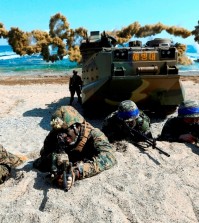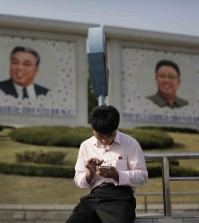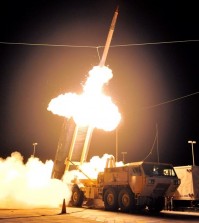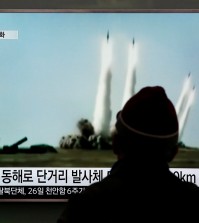- California Assembly OKs highest minimum wage in nation
- S. Korea unveils first graphic cigarette warnings
- US joins with South Korea, Japan in bid to deter North Korea
- LPGA golfer Chun In-gee finally back in action
- S. Korea won’t be top seed in final World Cup qualification round
- US men’s soccer misses 2nd straight Olympics
- US back on track in qualifying with 4-0 win over Guatemala
- High-intensity workout injuries spawn cottage industry
- CDC expands range of Zika mosquitoes into parts of Northeast
- Who knew? ‘The Walking Dead’ is helping families connect
Concerns over N. Korea’s drones overblown: analysts
By Kang Seung-woo
A number of defense analysts have expressed skepticism about the possibility of North Korea’s unmanned aerial vehicles (UAVs) posing any serious threat to national security.
Three drones that crashed here have dominated the headlines since the beginning of April, raising tension in South Korea over a possible new threat from Pyongyang.
But analysts said the drones are rudimentary and that it will take a long time for the North to develop any threatening surveillance or attack drones. They cautioned against any move by the Ministry of National Defense to invest a huge amount of money to buy radars capable of tracing UAVs.
Defense Minister Kim Kwan-jin took the leading role, saying on Friday that the North could use small drones (equipped with biological and chemical agents) to carry out a “kamikaze-style attack.”
“Concerns about the drones are overblown. How much conventional explosives can a small UAV carry?” said Lee Hee-woo, a retired Air Force general.
Greg Waldron, Asia managing editor of FlightGlobal, an aviation and aerospace industry website, also said: “In theory North Korea could put chemical weapons on drones, but their payload would be extremely limited.”
Even the defense ministry that recently ramped up security concerns also admitted that threats from the North’s drones are exaggerated.
“The crashed UAVs are of no military significance,” ministry spokesman Kim Min-seok said in a briefing. “Should the drone be used as an attack device, it could manage to carry about 2 to 3 kilograms of TNT.”
Lee added that the defense ministry is overstressing the effectiveness of the drones, as if they have the precision capabilities of cruise missiles.
“If a drone can perform as well as a cruise missile, why do other countries still keep those expensive missiles in service rather than using cheaper UAVs,” he said.
As the North’s small aircraft were found to have entered the South’s airspace, the South plans to induce low-altitude surveillance radar and anti-aircraft guns ― although the plan is expected to fizzle out.
“Meaningless,” Lee said. “The radar is expensive, but its coverage is narrow. So, the South is required to purchase hundreds of radars, which will cost a lot.”
According to the defense ministry, the North now possesses more than 300 UAVs ― some 300 for reconnaissance, 10 for attack and 10 Russian-made Shmel ― and it is also developing a multi-purpose UAV, named Durumi, or crane.
However, Waldron said that the North’s UAVs do not really pose a threat to the South.
“UAVs are most effective as weapons and surveillance platforms in ‘permissive’ aerospace. But operating UAVs in a meaningful way over a country such as South Korea, which has a world-class air force and military, would be extremely difficult, if not impossible ― particularly for a backwards nation such as North Korea,” he said.
Lee pointed out that the South’s more formidable security threats from the North are long-range artilleries and rockets deployed near the demilitarize zone and furthermore, nuclear weapons, not the small drones.
“The military should seek countermeasures to prevent those yet bigger threats rather than overreacting to the drone,” he said.
















